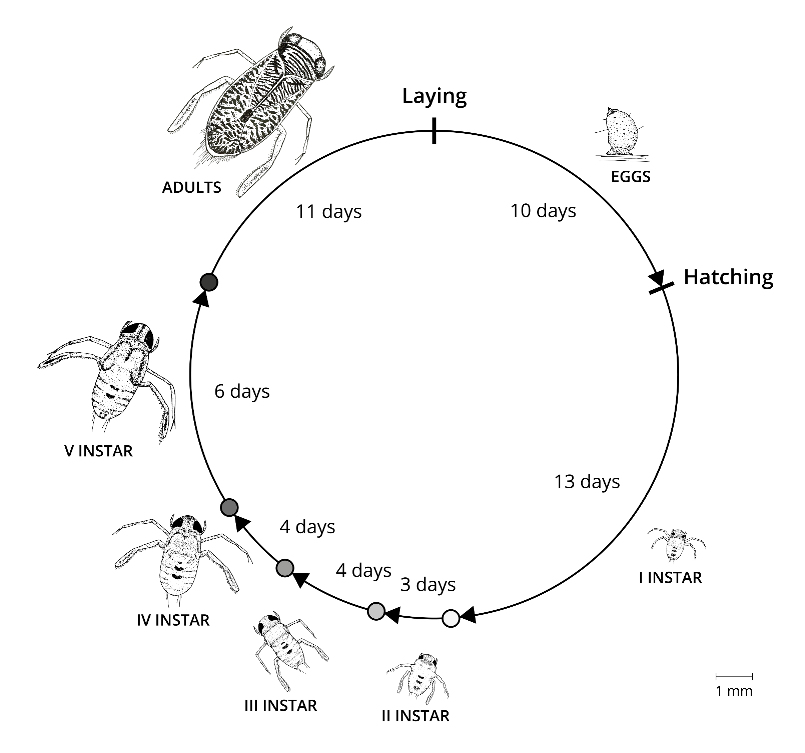Trichocorixa verticalis (Corixidae) is native to North America but is well established as an alien in the Western Mediterranean region, where it is invasive in permanent coastal wetlands with high salinities. The annual cycle and generation time of T. verticalis was investigated in the introduced range in south-west Spain, through a combination of field surveys and laboratory experiments. Field surveys were conducted on a monthly basis over one year in three saline fish ponds in Doñana and four hypersaline salt ponds in the Odiel marshes. Adults were present all year round, whereas nymphs were only absent in August, when temperatures and salinities were high. Adult sex ratios were idiosyncratic and often male- or female- biased for a given location and month. Adults were smaller during summer months. Laboratory experiments revealed an oviposition rate of 11.5 eggs per day and a generation time of about 54 days from egg to adult, suggesting T. verticalis may complete around six generations per year in permanent wetlands. A combination of a high oviposition rate and continuous reproduction throughout the year give T. verticalis an advantage over native corixid competitors (Sigara spp) and appear to explain the success of this alien aquatic insect. informacion[at]ebd.csic.es: Céspedes et al (2018) The life cycle of the alien boatman Trichocorixa verticalis (Hemiptera, Corixidae) in saline and hypersaline wetlands of south-west Spain. Hydrobiol DOI 0.1007/s10750-018-3782-x
https://link.springer.com/article/10.1007/s10750-018-3782-x

 Las altas temperaturas están provocando que las lagunas y las marismas de Doñana pierdan agua rápidamente
Las altas temperaturas están provocando que las lagunas y las marismas de Doñana pierdan agua rápidamente




